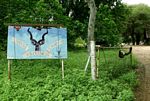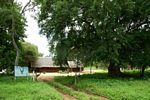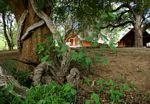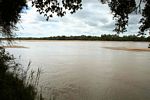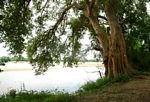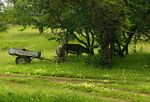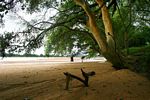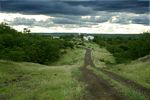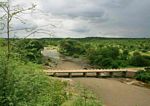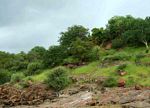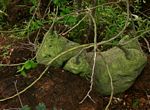Location: Shashe Wilderness Camp and the Tuli area
General Information
Quarter degree square: 2129C3 Country: Zimbabwe Habitat: Dry deciduous open woodland, grassland, seasonal pans, riverine vegetation. Altitude range: c. 600 m Annual rainfall: Location (short): Location (detailed): |
Description
Tucked away in one of the most remote and untouched corners of the country lies Tuli. Though marked on most maps as a true village, it consists of little more than a police post, surrounded by vast expanses of near empty scrubland, dominated by Colophospermum mopane (Caesalpiniaceae), Terminalia prunoides (Combretaceae), Commiphora glandulosa (Burseraceae) and several of its equally undemanding cousins. Less than a kilometer further, the Shashe River marks what should be, by any other logic, the border with neighbouring Botswana, weren't it for some bizarre historical twist carving out the "Tuli-Circle" on the opposite bank and planting the Zimbabwean flag. On the banks of the river, Wildlife & Environment Zimbabwe, long ago built a small camp, where members and non-members can stay to enjoy the natural beauty and tranquility of the area in shade of majestic riverine trees like Ficus sycamorus (Moraceae), Faidherbia albida (Mimosaceae) and Xanthocercis zambesiaca (Fabaceae). Most of the year the soils appear to be a dry and barren resort, suitable only to hardy succulents like Sesamothamnus lugardii (Pedaliaceae), Euphorbia cooperi (Euphorbiaceae), Aloe chabaudii (Aloaceae), Stapelia gigantea (Asclepiadaceae) or the grotesque Adenia spinosa (Passifloraceae). However, an often brief and meagre season of rains, temporarily transforms the earth into a colourful garden of eager and short-lived flowers. Carpets of Tribulus zeyheri (Zygophyllaceae) are mixed with the bright orange-red bells of Hermannia kirkii (Sterculiaceae), deep pink heads of Indigofera holubii (Fabaceae) and many others.
Useful links
View a list of records for Shashe Wilderness Camp and the Tuli area
